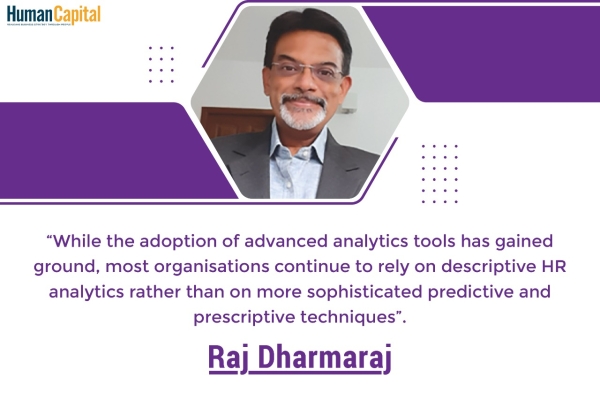In the absence of a matching infrastructure, even the most competent millennials from top-level institutes cannot bring about any qualitative or quantitative change in their organisation.
We often hear many top executives expressing their ardent wish to infuse young blood into their organisation. In India, the demand-supply equation on the talent front, particularly in the knowledge domain, is usually in the employer’s favour, and this scenario is likely to stay for the near future. On the contrary, it is a good idea to consider India’s demographic shift and the exuberance and energy millennials carry with them. After all, it is the youth who determine the future of organisations and facilitate the adoption of agile succession practices.
However, this represents only half the story since most organisations falter when it comes to establishing what one would term as a ‘matching infrastructure’ for their millennial employees. Matching Infrastructure implies the entire enabling environment that consists of tangible and intangible systems and processes that are vital for channelizing and tapping millennials’ potential. As a simple analogy, our body has a system of heart, veins and arteries to facilitate blood to perform its intended functions, and the absence/ malfunction of such a system leads to blood stagnation irrespective of the haemoglobin levels and the other vital elements. Similarly, in the absence of a matching infrastructure, even the most competent millennials from top- level institutes cannot bring about any qualitative or quantitative change in their organisation.
Organisations need to realise that nomenclatures like ‘Millennial’ or ‘Gen Z’ etc. are not mere semantics. They actually reflect a paradigmatic shift in the way people think and behave. This generation is exposed to free flowing information, is empowered and free-thinking and accustomed to prompt actions and results. They deserve commensurate treatment at the workplace through good intent and clear vision. This must be executed with organisation-specific nuances, but some broad pointers mentioned below may be looked into:
• Flexible Career Progression: Millennials are quite willing to exert themselves while putting forth and implementing fresh ideas, provided there is a flexible career progression. So, it warrants a certain degree of fast-tracking and the performance management system can create a healthy differentiation without discrimination.
• Job Re-analysis and Job Re-evaluation: Corporates should be willing to periodically review their job description and compensation in light of changing times. They can split, club together or re-jig some of the existing jobs. Job design literature can be helpful in this direction. Also, it may not be a great idea to rely heavily on benchmarking for fixing compensation.
• Opportunities for Professional Growth: Millennials usually prefer to get into a ‘partnership’ with their organisations rather than the conventional transactional relationship. They expect their growth to be intertwined with that of their organisation. The latter should ensure professional development for its young employees by providing them learning opportunities with greater PL-ownership, flexibility to work on a short stint on different domains, and meaningful L&D policies etc.
• Emphasis on Employee Well Being: This essentially refers to the physical side of matching infrastructure and has now become a mere hygiene factor. Companies should invest in maintaining proper in-house health and well-being infrastructure. And lastly, there should be enough provision for fun-filled activities as well (OB literature is replete with its workplace significance).
Admittedly, while keeping the underlying philosophy intact, the aforementioned points may be tweaked to some extent on the basis of factors like the nature of the job, financial viability, etc. But the overall effect is most likely to be positive both in the short and long run. With a suitable matching infrastructure in place, this gush of young blood will be visible and audible in the entire organisation.

Does your organisation support you in maintaining work-life boundaries?
Trending
-
SBI General Insurance Launches Digital Health Campaign
-
CredR Rolls Out 'Life Happens' Leave For Its Employees
-
Meesho Announces 30-Week Gender-Neutral Parental Leave Policy
-
Microsoft Unveils Tech Resilience Curriculum To Foster An Inclusive Future
-
60% Indian Professionals Looking For Job Change Due To COVID: Survey
-
SpringPeople And Siemens Collaborate For Digital Transformation Push
-
86% Professionals Believe Hybrid Work Is Essential For Work Life Balance: Report
-
Almost 1 In Every 3 People's Personal Life Affected Due To Work Stress
-
Meesho Rolls Out Reset And Recharge Policy For Employees
-
80% Of Talent Leaders & Academics Say Pandemic Changed Skill Needs For Youth: Report
-
Hero Electric Rolls Out 'Hero Care' Program For Employees
-
Human Capital In Collaboration With ASSOCHAM Hosts Virtual Conference
-
IKEA India, Tata STRIVE Collaborate To Create Employability And Entrepreneurship Opportunities
-
SAP India, Microsoft Launch Tech Skilling Program for Young Women
-
DXC Technology, NASSCOM Collaborate For Employability Skills Program
-
Lenskart To Hire Over 2000 Employees Across India By 2022
-
Mindtree Launches Learn-and-Earn Program
-
Tata AIA Extends 'Raksha Ka Teeka' To Its Employees
-
Swadesh Behera Is The New CPO Of Titan
-
NetConnect Global Plans To Recruit 5000 Tech Professionals In India
-
Hubhopper Plans To Hire 60% Of Indian Podcasters By 2022
-
Corporate India Needs More Women In Leadership Roles: Report
-
Aon to Invest $30 Million and Create 10,000 Apprenticeships by 2030
-
Tech Mahindra Launches ‘Gift a Career’ Initiative for Upskilling of Youth
-
40% Women Prefer Flexible Working Options in Post-COVID World: Survey
-
3 out of 4 companies believe they can effectively hire employees virtually: Report
-
Vodafone , CGI and NASSCOM Foundation launch digital skills platform
-
Odisha: Bank, postal employees to deliver cash for elderly, differently-abled persons
-
Skill India launches AI-based digital platform for "Skilled Workforce"
-
Hiring activity declines 6.73% in first quarter: Survey
-
70% startups impacted by COVID-19 pandemic
-
Bajaj Allianz Life ropes in Santanu Banerjee as CHRO
-
Over 70 Percent MSMEs look at cutting jobs to sustain businesses
-
93 Per Cent employees stressed about returning to office post-lockdown
-
Johnson & Johnson India announces family benefits for same gender partners
-
Indian firms turning friendly towards working mothers
-
Welspun India names Rajendra Mehta as new CHRO
-
Wipro partners with NASSCOM to launch Future Skills platform



Human Capital is niche media organisation for HR and Corporate. Our aim is to create an outstanding user experience for all our clients, readers, employers and employees through inspiring, industry-leading content pieces in the form of case studies, analysis, expert reports, authored articles and blogs. We cover topics such as talent acquisition, learning and development, diversity and inclusion, leadership, compensation, recruitment and many more.
Subscribe Now












































Comment